
The Timeless Charm of Barrio del Centenario
Discover the historic and cultural richness of Barrio del Centenario in Guayaquil, where colonial charm meets modern vibrancy in a picturesque setting.
Barrio del Centenario, located in the vibrant city of Guayaquil, is a neighbourhood that beautifully bridges the past and the present. Known for its rich history and cultural significance, it offers tourists a unique blend of colonial architecture and modern amenities. As you stroll through its tree-lined streets, you'll be captivated by the well-preserved buildings that date back to the early 20th century, showcasing an array of architectural styles from neoclassical to art deco. The neighbourhood is not just a visual treat but also a cultural hub. It is home to a variety of museums, galleries, and theatres that provide deep insights into Ecuadorian art and history. The Museo Nahim Isaias, for example, offers an extensive collection of colonial art, while the Casa de la Cultura is a bustling center for contemporary performances and exhibitions. For those interested in local crafts, the artisanal markets scattered throughout the Barrio are a must-visit. Food lovers will find Barrio del Centenario a culinary paradise. The area boasts numerous cafes, restaurants, and street food vendors offering a range of traditional Ecuadorian dishes. Whether you're sipping on a cup of freshly brewed Ecuadorian coffee or indulging in a plate of ceviche, the flavours here are sure to delight your palate. The neighbourhood's lively atmosphere is further enhanced by its welcoming locals, making it a truly immersive experience.
Local tips in Barrio del Centenario
- Visit early in the morning to enjoy a peaceful walk through the historic streets before they get busy.
- Check the schedule at Casa de la Cultura for live performances and exhibitions.
- Try the local street food, especially the traditional ceviche, for an authentic culinary experience.
- Bring a camera to capture the stunning colonial architecture and vibrant street scenes.
- Visit the artisanal markets for unique handmade crafts and souvenirs.
The Timeless Charm of Barrio del Centenario
Barrio del Centenario, located in the vibrant city of Guayaquil, is a neighbourhood that beautifully bridges the past and the present. Known for its rich history and cultural significance, it offers tourists a unique blend of colonial architecture and modern amenities. As you stroll through its tree-lined streets, you'll be captivated by the well-preserved buildings that date back to the early 20th century, showcasing an array of architectural styles from neoclassical to art deco. The neighbourhood is not just a visual treat but also a cultural hub. It is home to a variety of museums, galleries, and theatres that provide deep insights into Ecuadorian art and history. The Museo Nahim Isaias, for example, offers an extensive collection of colonial art, while the Casa de la Cultura is a bustling center for contemporary performances and exhibitions. For those interested in local crafts, the artisanal markets scattered throughout the Barrio are a must-visit. Food lovers will find Barrio del Centenario a culinary paradise. The area boasts numerous cafes, restaurants, and street food vendors offering a range of traditional Ecuadorian dishes. Whether you're sipping on a cup of freshly brewed Ecuadorian coffee or indulging in a plate of ceviche, the flavours here are sure to delight your palate. The neighbourhood's lively atmosphere is further enhanced by its welcoming locals, making it a truly immersive experience.
Iconic landmarks you can’t miss
Parque Seminario
Experience the tranquility of Parque Seminario in Guayaquil, where nature meets culture amidst the vibrant atmosphere of Ecuador's coastal city.
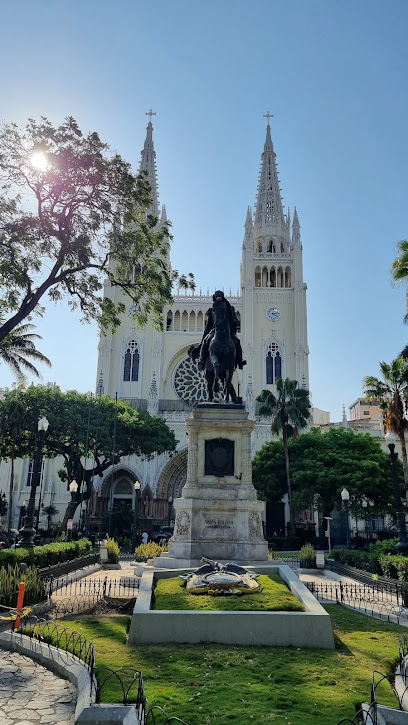
Parque Centenario
Discover the beauty of Parque Centenario, a lush park in Guayaquil filled with art, culture, and tranquility, perfect for relaxation and exploration.
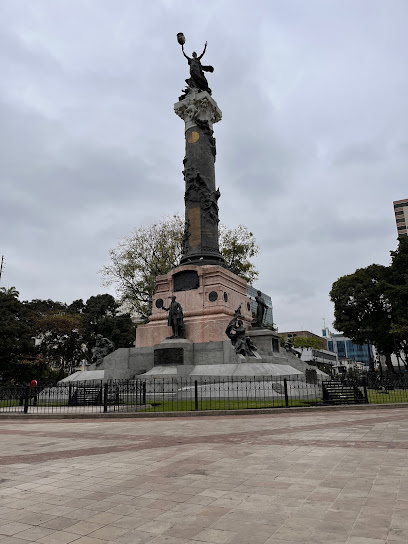
Guayaquil Historical Park
Experience Ecuador's rich heritage at Guayaquil Historical Park, where history, culture, and nature come together in a vibrant setting.
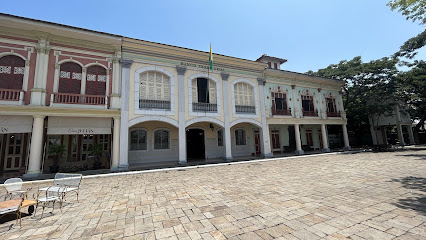
Malecón del Salado
Explore the stunning views and vibrant culture at Malecón del Salado, Guayaquil’s premier waterfront park, perfect for relaxation and recreation.
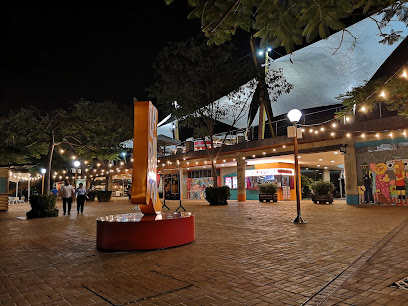
Hemicycle De La Rotonda
Discover the historical charm and cultural significance of Hemicycle De La Rotonda, a must-see landmark in Guayaquil, Ecuador.
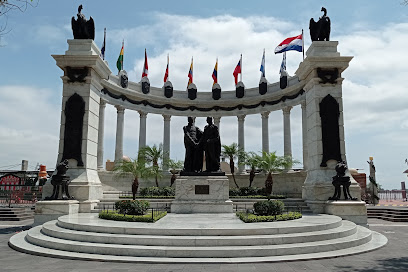
Torre Morisca
Explore Torre Morisca, a stunning Moorish clock tower in Guayaquil, Ecuador. A must-see landmark that embodies the city's rich history and vibrant culture.
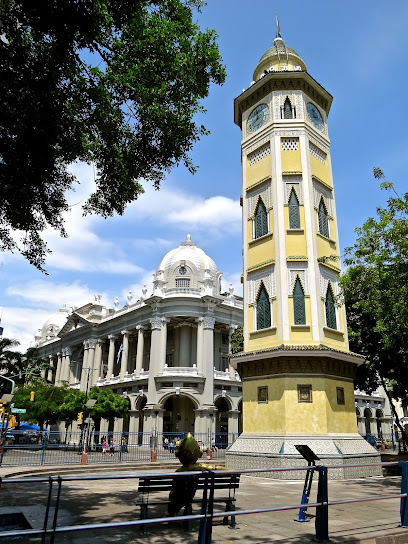
Parque Barrio Centenario
Explore the serene beauty of Parque Barrio Centenario, an urban oasis in Guayaquil ideal for relaxation and cultural immersion.

Firefighter Memorial
Explore the Firefighter Memorial in Guayaquil, a solemn tribute to bravery and sacrifice in the heart of Ecuador's vibrant city.
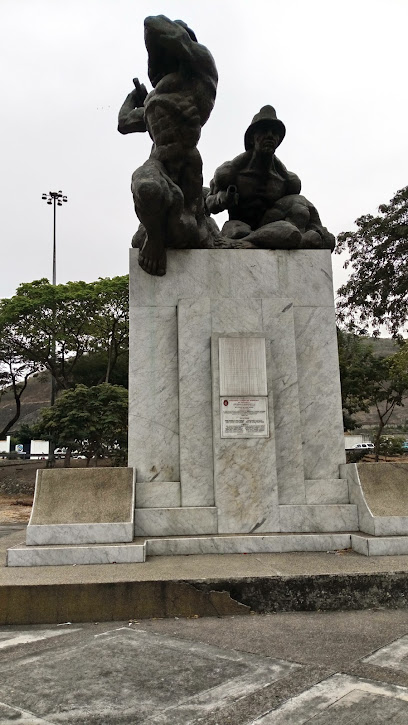
Barrio Del Centenario Este
Explore Guayaquil from Barrio Del Centenario Este – your essential hub for local bus routes and a glimpse into the city's lively culture.

Monumento a Cristian Urdesa Vázquez
Explore the Monumento a Cristian Urdesa Vázquez, a historical landmark in Guayaquil celebrating local heritage and cultural significance.
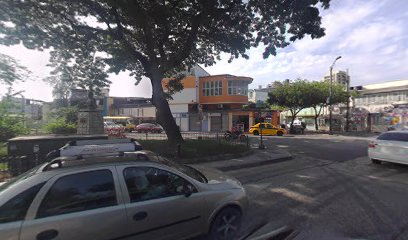
Igle veci
Explore Igle Veci in Guayaquil, Ecuador, a tranquil spiritist center offering deep insights into spirituality and local traditions.
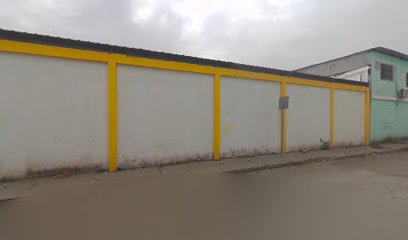
Unmissable attractions to see
Malecon 2000
Explore Malecon 2000, Guayaquil's premier waterfront destination for leisure, culture, and stunning river views.
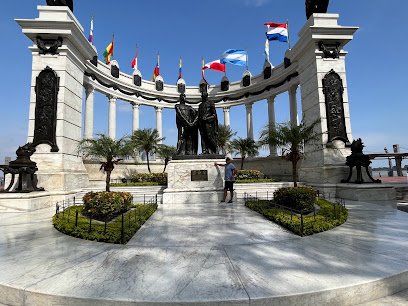
Parque Centenario
Experience the lush beauty and rich culture of Parque Centenario, a must-visit park in Guayaquil for tourists seeking relaxation and local charm.
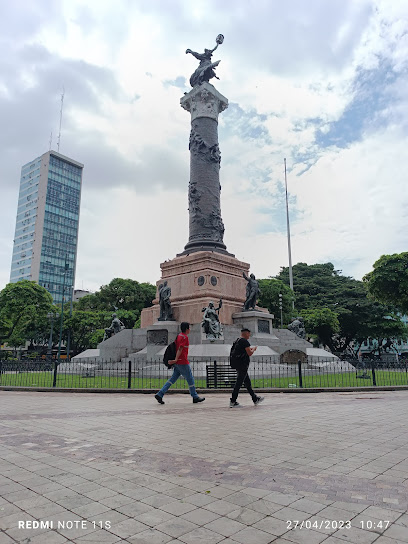
Guayaquil Historical Park
Discover the vibrant blend of nature and history at Guayaquil Historical Park, a top tourist attraction in Ecuador.
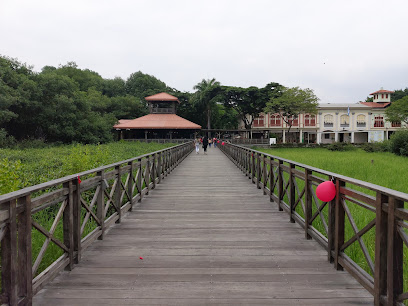
Parque Lineal del Estero Salado
Experience the tranquility and beauty of Parque Lineal del Estero Salado in Guayaquil, a perfect urban escape with lush greenery and scenic views.
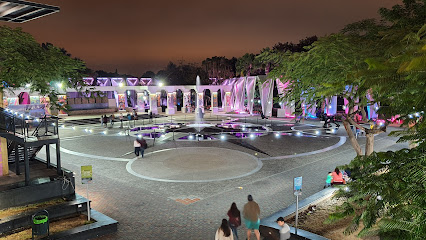
Museo El Fortín
Explore the treasures of Ecuador's history at Museo El Fortín, a captivating museum in Guayaquil showcasing cultural artifacts and stunning views.

Safari Park
Experience the thrill of rides and the beauty of wildlife at Safari Park, Guayaquil's premier amusement park for all ages.

Cerro Santa Ana
Experience the vibrant culture, stunning views, and rich history at Cerro Santa Ana, a charming hilltop attraction in Guayaquil, Ecuador.
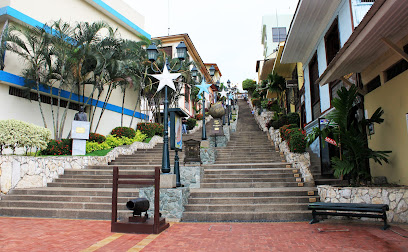
Parque Barrio Centenario
Discover the serene beauty of Parque Barrio Centenario in Guayaquil, a lush park perfect for relaxation, picnics, and cultural experiences.
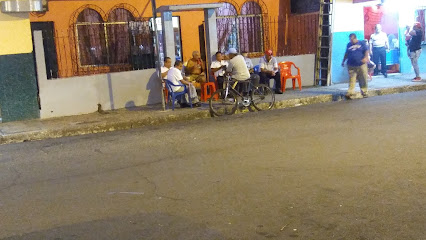
Puente peatonal y ciclovía a Santay
Explore the breathtaking footbridge to Santay Island, a picturesque escape in Guayaquil, Ecuador, perfect for cycling and leisurely walks.
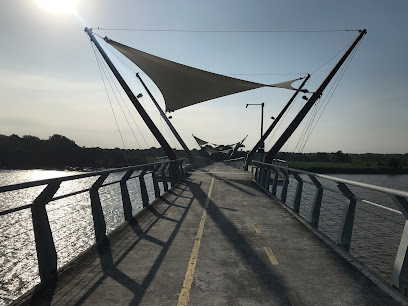
Monumento a Simón Bolivar
Explore the Monumento a Simón Bolívar, a historical tribute in Guayaquil that captures the spirit of South America's liberator amidst beautiful gardens.
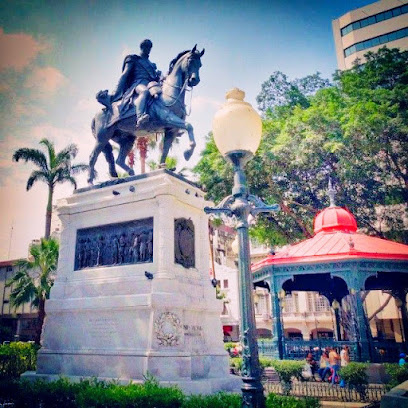
Essential places to dine
La casa del Tomahawk - Centenario
Experience exquisite Ecuadorian cuisine at La Casa del Tomahawk in Guayaquil's vibrant Centenario district.

Gong el Sarten Chino (Centenario)
Experience the best of authentic Chinese cuisine at Gong el Sarten Chino in Guayaquil's Centenario district.

Picanteria El idolo
Experience the best of traditional Ecuadorian cuisine at Picanteria El Idolo in Guayaquil – where every dish tells a story.

Japi Fish
Discover Japi Fish in Guayaquil: A seafood paradise offering fresh dishes infused with local flavors and warm hospitality.
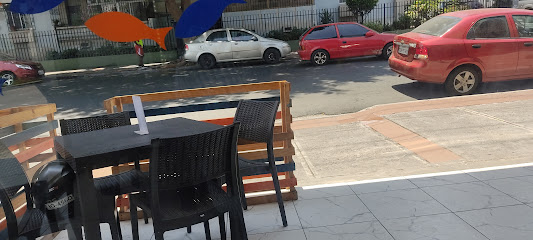
Restaurant Mei Shi
Experience authentic Chinese cuisine at Restaurant Mei Shi in Guayaquil - where tradition meets taste in every dish.

LuGa's Restaurant
Experience authentic Ecuadorian cuisine at LuGa's Restaurant in Guayaquil, where every dish tells a story.

Fogón Cubano
Experience authentic Cuban cuisine at Fogón Cubano in Guayaquil - where every bite transports you to the heart of Cuba.

LA CASA DEL ASADO
Experience the best of Ecuadorian brunch at La Casa del Asado in Guayaquil - where flavor meets tradition!
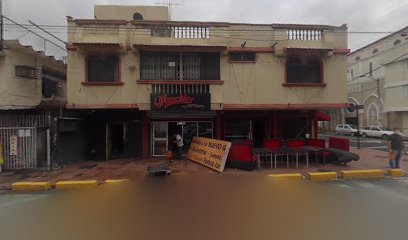
SEAFOOD RESTOBAR
Discover the vibrant tastes of Ecuadorian seafood at Seafood Restobar in Guayaquil - where freshness meets tradition.
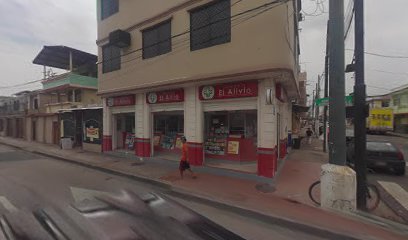
BAR RESTAURANTE MAREA BAMBÚ
Experience authentic Ecuadorian cuisine at BAR RESTAURANTE MAREA BAMBÚ, where every dish tells a story and every bite is an adventure.
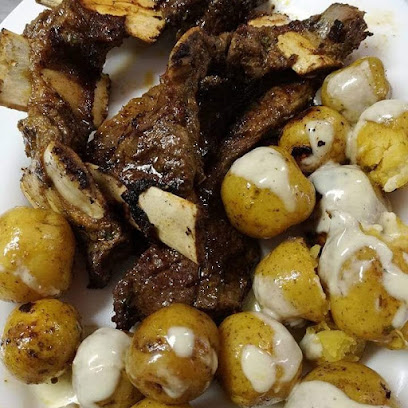
Markets, malls and hidden boutiques
Artisanal Market of Guayaquil
Discover the colorful Artisanal Market of Guayaquil, a cultural gem filled with local crafts, flavors, and vibrant community spirit.
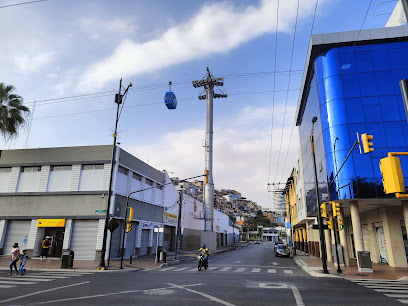
C.C. Unicentro
Discover Unicentro, the heart of shopping and entertainment in Guayaquil, Ecuador, where local culture meets global brands.
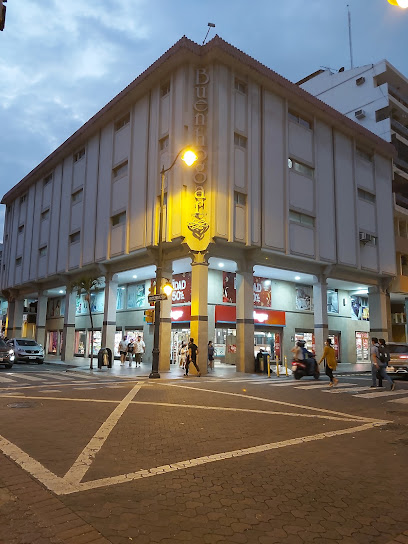
Ecua Andino Hats
Discover the art of traditional Ecuadorian hat-making at Ecua Andino Hats in Guayaquil, where craftsmanship meets culture.
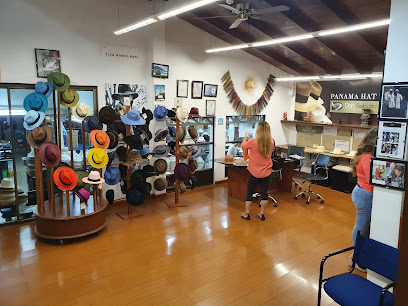
Carmelitas - Tienda de Regalos
Discover unique Ecuadorian gifts at Carmelitas, Guayaquil's charming gift shop, where local craftsmanship meets cultural heritage.

Loveit Detalles personalizados
Explore Loveit Detalles Personalizados, your go-to gift shop in Guayaquil for unique, personalized treasures that capture the essence of Ecuador.
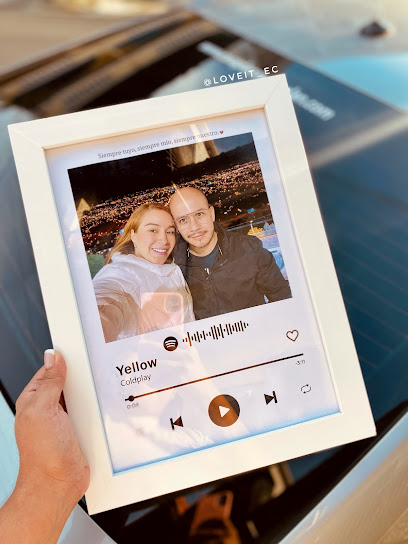
Click Up Ecuador
Discover unique gifts and authentic Ecuadorian beauty supplies at Click Up Ecuador in Guayaquil, the perfect shopping destination for tourists.

Beau Novias
Discover exquisite bridal gowns at Beau Novias in Guayaquil, specializing in elegant rentals and personalized service for your perfect wedding day.

REGALOS Y ACESORIOS KAWAII - MANGAS STORE EC
Explore Regalos y Acesorios Kawaii in Guayaquil for a unique selection of adorable gifts, collectibles, and stationery that capture the essence of kawaii culture.

C. C. Paseo Centenario
Discover the best of shopping and dining at C. C. Paseo Centenario, a premier shopping destination in Guayaquil, Ecuador.

Boutique Venecia (Sur)
Explore the stylish offerings at Boutique Venecia, a premier clothing store in Guayaquil, featuring local and contemporary fashion to elevate your wardrobe.
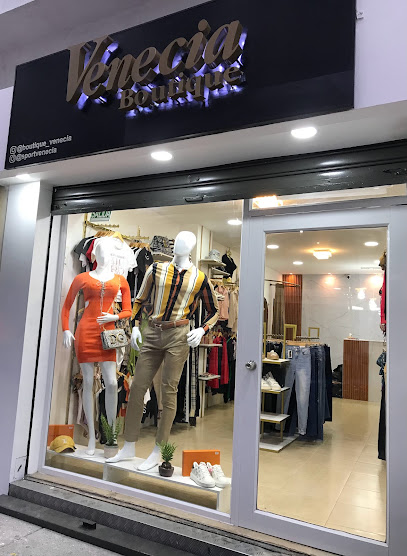
Tienda Atreus
Explore the best of Ecuadorian flavors at Tienda Atreus, your go-to grocery store in Guayaquil for local and international delicacies.
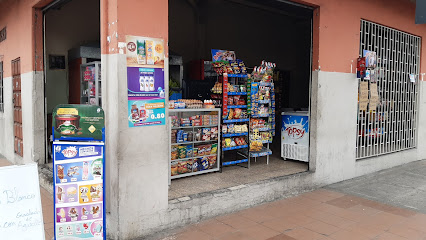
oriente shop tienda virtual
Discover authentic Ecuadorian crafts and local goods at Oriente Shop, a general store in Guayaquil that captures the essence of local culture.
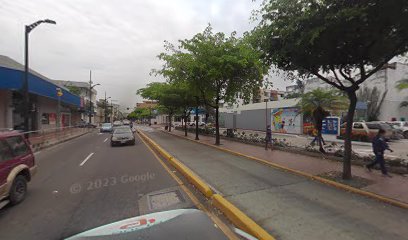
Variedades yulexy
Discover unmatched elegance and style at Variedades Yulexy, Guayaquil’s premier formal wear destination for every occasion.
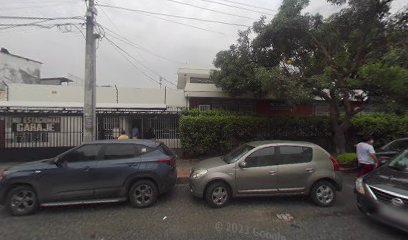
Closet de Alejandra
Explore Closet de Alejandra for unique fashion and accessories that celebrate local craftsmanship and style in a charming boutique atmosphere.
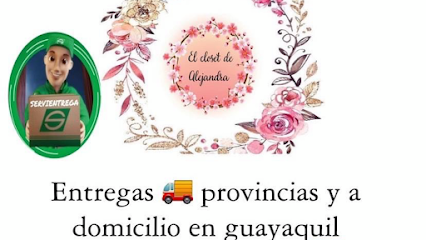
MABRIME STORE #205
Discover unique Ecuadorian fashion at Mabrime Store in Guayaquil's Centenario neighborhood, a treasure trove for style-savvy tourists.
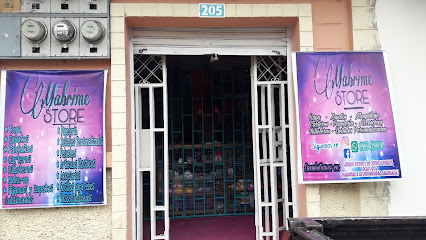
Essential bars & hidden hideouts
Frutabar Sur
Discover the vibrant flavors of Guayaquil at Frutabar Sur, where tropical drinks and delicious cuisine await in a lively atmosphere.
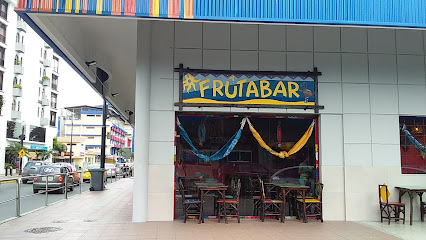
London Café
Discover the lively ambiance and delicious cuisine at London Café, a premier live music bar and gastropub in Guayaquil.
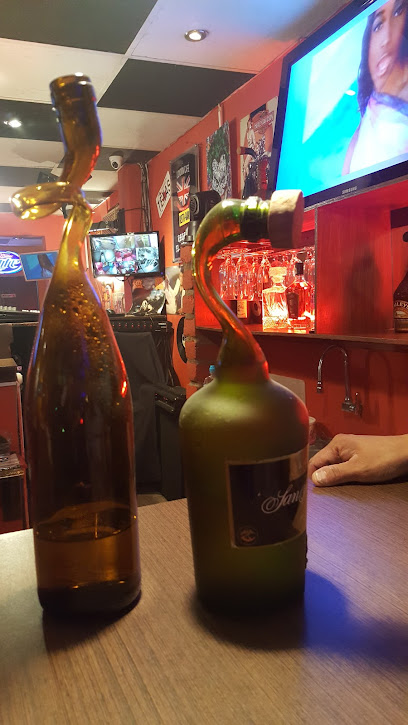
Las Vegas By Tony
Experience the best grilled dishes in Guayaquil at Las Vegas By Tony, where flavor meets a vibrant dining atmosphere.
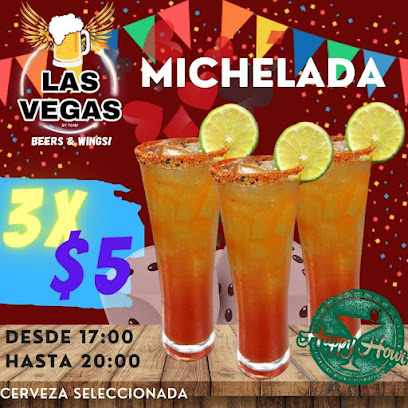
Az beer Resto-bar
Discover the lively Az Beer Resto-Bar in Guayaquil, where local flavors meet vibrant nightlife in an unforgettable experience.
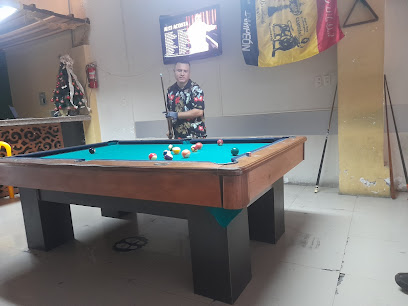
Beer Market 593
Discover the local beer culture at Beer Market 593, a vibrant stand bar in Guayaquil offering a fantastic selection of Ecuadorian brews.
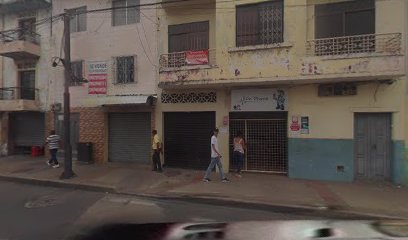
Drink One
Explore the vibrant nightlife of Guayaquil at Drink One, the cocktail bar that redefines mixology with innovative flavors and a lively atmosphere.
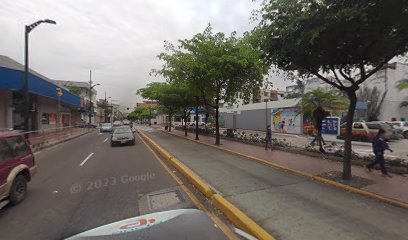
Snack Fusion
Experience the thrill of live sports at Snack Fusion, Guayaquil's premier sports bar, offering delicious snacks and an electrifying atmosphere.
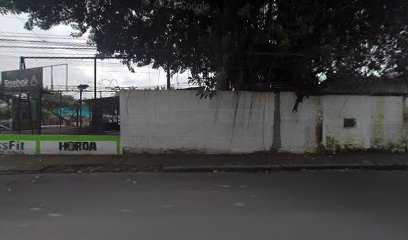
Boulevard Brewing Co.
Experience the vibrant craft beer culture at Boulevard Brewing Co. in Guayaquil, a brewpub that delights with its unique flavors and inviting atmosphere.
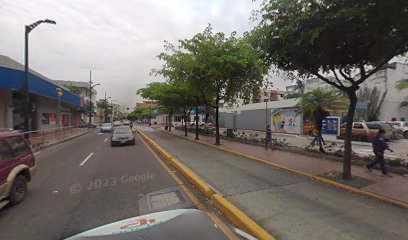
Abi
Discover the heart of Guayaquil's nightlife at Abi, a vibrant bar offering unique cocktails and a lively atmosphere perfect for socializing.
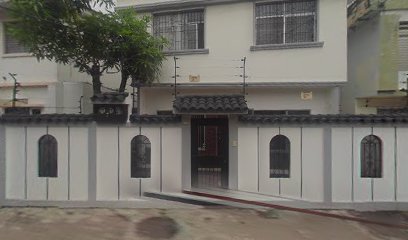
Motorflair Bartender cócteles y barras móviles
Experience the art of mixology at Motorflair Bartender in Guayaquil, where each cocktail is a unique creation waiting to be savored.

Local Phrases
-
- HelloHola
[oh-lah] - GoodbyeAdiós
[ah-dee-ohs] - YesSí
[see] - NoNo
[noh] - Please/You're welcomePor favor/De nada
[por fah-vor/de nah-dah] - Thank youGracias
[grah-see-ahs] - Excuse me/SorryDisculpe/Lo siento
[dees-kool-peh/loh see-ehn-toh] - How are you?¿Cómo estás?
[koh-moh ehs-tahs] - Fine. And you?Bien. ¿Y tú?
[byehn. ee too] - Do you speak English?¿Hablas inglés?
[ah-blahs een-glehs] - I don't understandNo entiendo
[noh ehn-tyehn-doh]
- HelloHola
-
- I'd like to see the menu, pleaseMe gustaría ver el menú, por favor
[meh goos-tah-ree-ah behr ehl meh-noo, por fah-vor] - I don't eat meatNo como carne
[noh koh-moh kahr-neh] - Cheers!¡Salud!
[sah-lood] - I would like to pay, pleaseMe gustaría pagar, por favor
[meh goos-tah-ree-ah pah-gahr, por fah-vor]
- I'd like to see the menu, pleaseMe gustaría ver el menú, por favor
-
- Help!¡Ayuda!
[ah-yoo-dah] - Go away!¡Vete!
[veh-teh] - Call the Police!¡Llame a la policía!
[yah-meh ah lah poh-lee-see-ah] - Call a doctor!¡Llame a un médico!
[yah-meh ah oon meh-dee-koh] - I'm lostEstoy perdido
[ehs-toy pehr-dee-doh] - I'm illEstoy enfermo
[ehs-toy ehn-fehr-moh]
- Help!¡Ayuda!
-
- I'd like to buy...Me gustaría comprar...
[meh goos-tah-ree-ah kohm-prahr...] - I'm just lookingSolo estoy mirando
[soh-loh ehs-toy mee-rahn-doh] - How much is it?¿Cuánto cuesta?
[kwahn-toh kwehs-tah] - That's too expensiveEso es demasiado caro
[eh-soh ehs de-mah-see-ah-doh kah-roh] - Can you lower the price?¿Puede bajar el precio?
[pweh-deh bah-har ehl pree-see-oh]
- I'd like to buy...Me gustaría comprar...
-
- What time is it?¿Qué hora es?
[keh oh-rah ehs] - It's one o'clockEs la una
[ehs lah oo-nah] - Half past (10)Media (diez)
[meh-dee-ah (dyehs)] - MorningMañana
[mah-nyah-nah] - AfternoonTarde
[tahr-deh] - EveningNoche
[noh-cheh] - YesterdayAyer
[ah-yehr] - TodayHoy
[oy] - TomorrowMañana
[mah-nyah-nah] - 1Uno
[oo-noh] - 2Dos
[dohs] - 3Tres
[trehs] - 4Cuatro
[kwah-troh] - 5Cinco
[seen-koh] - 6Seis
[says] - 7Siete
[syeh-teh] - 8Ocho
[oh-choh] - 9Nueve
[nweh-veh] - 10Diez
[dyehs]
- What time is it?¿Qué hora es?
-
- Where's a/the...?¿Dónde está...?
[dohn-deh ehs-tah] - What's the address?¿Cuál es la dirección?
[kwahl ehs lah dee-rehk-syohn] - Can you show me (on the map)?¿Puede mostrarme (en el mapa)?
[pweh-deh mohs-trar-meh (ehn ehl mah-pah)] - When's the next (bus)?¿Cuándo es el próximo (autobús)?
[kwan-doh ehs ehl proh-ksee-moh (ow-toh-boos)] - A ticket (to ....)Un boleto (para ....)
[oon boh-leh-toh (pah-rah)]
- Where's a/the...?¿Dónde está...?
History of Barrio del Centenario
-
Barrio del Centenario was established in the early 20th century, primarily to commemorate the centenary of Ecuador's independence in 1920. This neighbourhood emerged as part of Guayaquil's urban expansion, responding to the growing population and the need for housing. Its development was closely tied to the city's economic growth fueled by trade and the agricultural boom of the region.
-
The architecture of Barrio del Centenario reflects the eclectic styles that characterize Guayaquil in the early 1900s. It features a mix of neoclassical, Art Deco, and modernist influences. The neighbourhood was designed to accommodate middle-class families and became a vibrant area filled with social and cultural activities, showcasing Guayaquil's progressive vision during that era.
-
Barrio del Centenario became known for its strong sense of community and cultural identity. The neighbourhood was home to various cultural events, festivals, and local traditions that highlighted the rich heritage of Guayaquil. The establishment of community centers and local markets fostered a tight-knit environment, making it a focal point for social interaction among residents.
-
Throughout the 20th century, Barrio del Centenario witnessed significant historical events, including the devastating earthquake of 1949, which affected much of Guayaquil. The neighbourhood underwent various phases of reconstruction and modernization, reflecting the resilience of its community. These events contributed to the evolving identity of Barrio del Centenario as a symbol of Guayaquil’s strength and adaptability.
-
In recent years, Barrio del Centenario has experienced a revitalization, emphasizing cultural and artistic initiatives. The area has become a hub for local artists, musicians, and entrepreneurs, contributing to Guayaquil's broader cultural renaissance. Efforts to preserve its historical buildings and promote local art have transformed the neighbourhood into a vibrant space celebrating both its past and its dynamic present.
Barrio del Centenario Essentials
-
Barrio del Centenario is easily accessible from various neighborhoods in Guayaquil. From the city center, you can take a bus or a taxi. Buses labeled with 'Ballenita' or 'La Alborada' will take you close to the neighborhood. Alternatively, use the Metrovia bus system, which has a nearby station at 'Estación Centenario' for convenience. If coming from the airport, taxis are readily available, and the journey typically takes about 20 minutes depending on traffic.
-
Barrio del Centenario is a walkable neighborhood with many attractions within easy reach. Public buses and the Metrovia system provide convenient options for exploring further afield. Bicycles can be rented from local shops, and there are bike lanes along major roads. Taxis are also available and are an efficient way to navigate the area, especially during peak hours when public transport can be crowded.
-
Barrio del Centenario is generally safe for tourists, but it's wise to remain cautious. Avoid walking alone late at night, especially in poorly lit areas. Areas near the waterfront can be less safe after dark, so exercise caution. Keep an eye on your belongings in crowded places and be aware of your surroundings to avoid petty crime such as pickpocketing.
-
In case of an emergency, dial 911 for police, fire, or medical assistance. The local hospitals and clinics are available for medical emergencies, but it’s advisable to have travel insurance that covers healthcare costs. For non-urgent health issues, pharmacies are scattered throughout the neighborhood where you can find over-the-counter medications.
-
Fashion: Do wear lightweight, breathable clothing suitable for warm weather. Don’t wear overly revealing or provocative outfits, especially in religious sites. Religion: Do be respectful of local customs. If visiting churches, women should cover their shoulders and men should not wear hats. Public Transport: Do be polite and offer your seat to those in need. Don’t engage in loud conversations or consume food and drinks on buses. Greetings: Do greet locals with a smile and a handshake. Don’t be overly informal until you gauge the local customs. Eating & Drinking: Do try local dishes, especially seafood. Don’t refuse food offered to you, as it may be seen as disrespectful.
-
To experience Barrio del Centenario like a local, visit the nearby artisan markets for handmade crafts and local delicacies. Engage with the locals, as they are generally friendly and eager to share stories. Try to learn a few Spanish phrases, as it will enhance your interactions. Visit the Malecón del Salado for beautiful waterfront views and local food vendors. Check local event calendars for cultural activities, as the neighborhood often hosts festivals and celebrations that showcase its vibrant community spirit.
Nearby Cities to Barrio del Centenario
-
Things To Do in Salinas
-
Things To Do in Cuenca
-
Things To Do in Manta
-
Things To Do in Ambato
-
Things To Do in Macas
-
Things To Do in Loja
-
Things To Do in Tena
-
Things To Do in Mindo
-
Things To Do in Quito
-
Things To Do in Otavalo
-
Things To Do in Piura
-
Things To Do in Ibarra
-
Things To Do in Pasto
-
Things To Do in Chiclayo
-
Things To Do in Popayán





